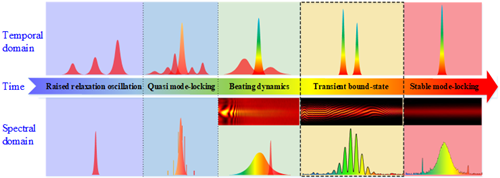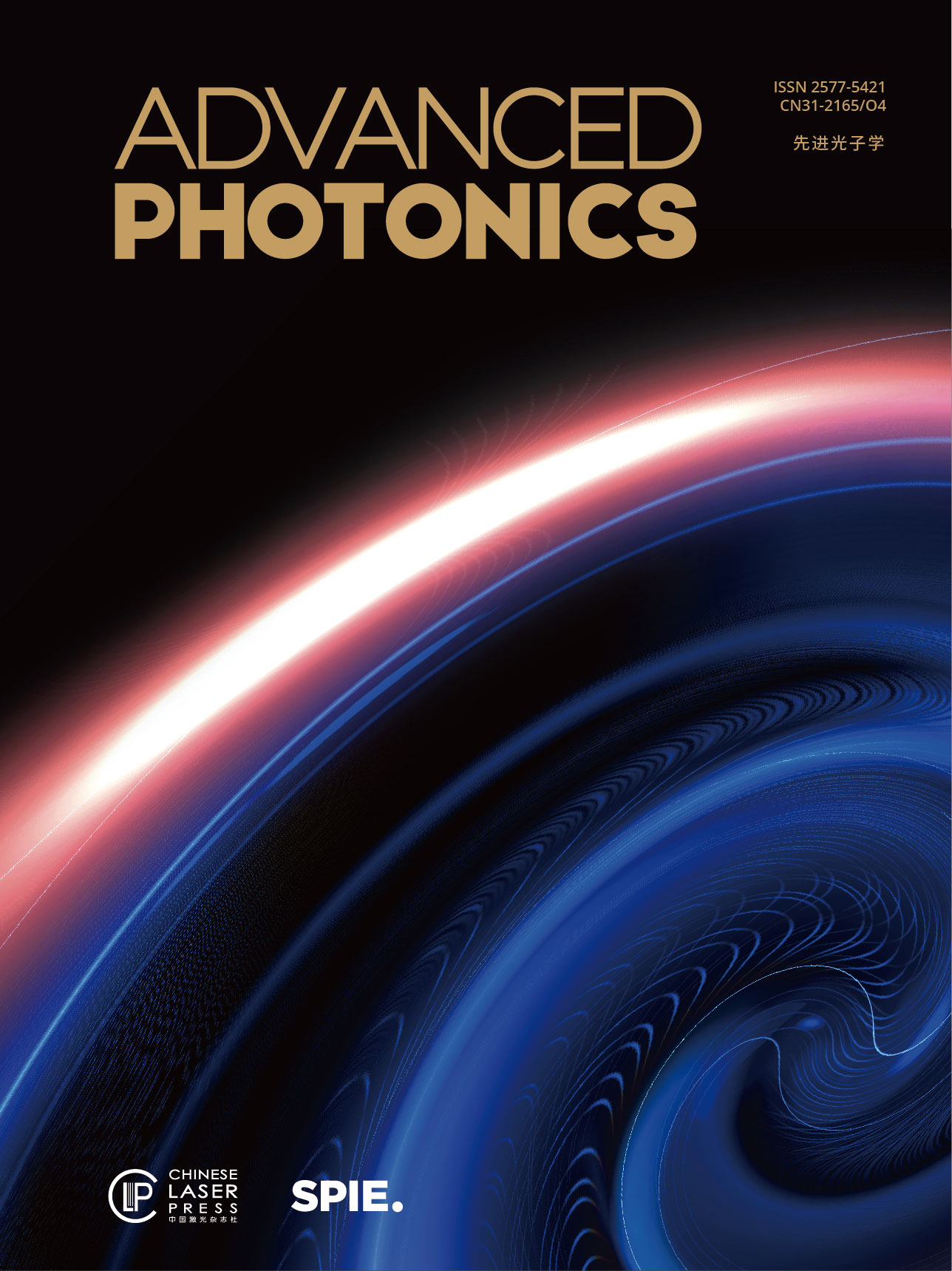Mode locking is a technique that locks a large number of longitudinal modes together to produce ultrafast pulses. Mode-locked lasers have enabled some of the most precise measurements, e.g., metrology with frequency combs. Passively mode-locked fiber lasers have widespread applications in the fields of fiber telecommunication, optical sensing, metrology, and microscopy, because of their compact and low-cost configuration as well as excellent features of high stability and low noise. Mode-locked fiber laser is also an ideal platform for researchers to explore new optical nonlinear phenomena.
Starting dynamics of mode-locked lasers have been investigated experimentally and theoretically since 1990s, but the spectral dynamics during the build-up of pulse lasers has not been measured directly. The transient non-repetitive processes cannot be measured by conventional technologies due to the speed limitation of electronic devices. Real-time spectroscopy based on an emerging time-stretch dispersive Fourier transform (TS-DFT) technique can map the spectral information of optical waves into the time domain, thus opening several fascinating explorations of nonlinear dynamics in mode-locked lasers. The TS-DFT technique provides a powerful way for real-time, single-shot measurements of ultrafast phenomena. The pulse-resolved spectral evolution of a femtosecond pulse train in a mode-locked laser and the transient coherent multi-soliton states had been captured by using the TS-DFT technique.
Recently, by means of the TS-DFT technique, Herink et al. observed the internal dynamics of soliton molecules (Science 356, 50, 2017) and resolved the build-up of solitons in mode-locked lasers (Nat. Photon. 10, 321, 2016). They demonstrated the process from transient to stable bound states. Ryczkowski et al. resolved real-time full-field characterization of transient dissipative soliton dynamics in mode-locked lasers (Nat. Photon. 12, 221, 2018). They characterized the spectral and temporal evolutions of ultrashort dissipative solitons as their dynamics pass through a transient unstable regime with complex break-up and collisions before stabilization. However, the entire build-up dynamics of solitons in mode-locked lasers have not been observed directly so far.
The self-starting process of mode-locked lasers is quite sensitive to the environmental perturbation, which drives the transient behaviors of lasers to deviate from the real process of soliton formation. Here, the Q-switched lasing is completely suppressed by reducing the environmental perturbation, improving the stability of the laser, and optimizing the mode-locker. We therefore demonstrate the first observation of the entire build-up process of solitons in a mode-locked laser, revealing two possible ways to generate the solitons. One way includes the dynamics of raised relaxation oscillation, quasi mode-locking stage, spectral beating behavior, and finally the stable single-soliton mode-locking. The other way contains, however, an extra transient bound-state stage before the final single-pulse mode-locking operation. Figure 1 exhibits the conceptual representation of different stages during the entire build-up process of solitons in a mode-locked laser. The plots in the top and down rows demonstrate the entire build-up process of solitons in temporal and spectral domains, respectively.

Figure 1. Conceptual representation of the entire build-up process of solitons in a mode-locked laser, successively undergoing the raised relaxation oscillation, quasi mode-locking stage, spectral beating dynamics, transient bound-state stage and stable mode-locking. Top and down rows: the entire build-up process of solitons in temporal and spectral domains, respectively.
Moreover, we have proposed theoretical models to describe the raised relaxation oscillation and evolution dynamics in the birth of solitons, which can successfully predict the build-up time of solitons. Our findings provide new perspectives into the ultrafast transient dynamics and bring real-time insights into laser design and applications. The real-time spectroscopy technique is expected to provide new insight into a wider class of phenomena in complex nonlinear systems.
Read More


